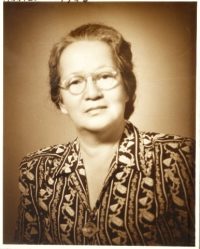At dawn the artillery duel between the Japanese and the Americans grew in intensity. As we crouched beneath the concrete staircase of our house on Padre Faura we asked ourselves, “When will the Americans come?”
Before the lines were cut someone had told us by telephone that the Americans had entered the University of Santo Tomas compound as well as Malacañan Palace and the ilibid prison on February 3. Now, five days later, they had not made their appearance in the south district. What had happened?
“How can the Kanô (as we called the Americans, to fool the enemy) come when they have retreated to Lingayen taking the American internees with them?’ Someone asked. “Phooey,” another replied. “That’s balitang cochero (rig driver’s gossip). It’s the Japs who are retiring toward the mountains to the east!” “No, sir, it’s the Kano…”
We eagerly awaited every piece of news, for we knew nothing of what was happening north of the river since the telephone wires were cut. We noticed, however, that the Japanese were stricter, more uncertain. They were more despotic with the civilians cowering in their houses and bomb shelters. Back and forth marine patrols tramped the streets, dirty, malevolent and cruel. They had planted land mines in all the street corners and posted sentinels with drawn bayonets at the entrances to all streets, slapping those who failed to bend at the required angle of obeisance, kicking aside packages not opened quickly enough for inspection, and inflicting indignities on defenseless women.
A stream of refugees from Marques de Comillas, San Marcelino and General Luna walked down our street on their way south. The wounded limped toward the General Hospital, across Taft Avenue. They had been told to evacuate their homes, which they were about to be set on fire. All day we could hear explosions as buildings were blown up and gasoline fire consumed the debris. Sticks of dynamite had been hidden by the Japanese in Red Cross carton boxes. The Japanese had built a fortress around their quarters at the corner of Taft avenue and Padre Faura. They surrounded this with sacks of rice, which a month ago was selling at 750 pesos a ganta, and brown sugar, which in the same month was 900 pesos a kilo, soya beans and wheat. h These commodities we were dying to buy, but they had become unobtainable at any price. Marine patrols went up each house, one by one, in the mistaken belief that guerrillas were hiding in them. They searched for firearms and confiscated the money and jewelry they found.
We had prepared a few sacks of old clothes, canned food and some rice to carry in the flight that seemed inevitable.
A jolting explosion broke the window panes of nearby houses. The enemy had set fire to their quarters and were now setting fire to the surrounding houses, including ours. We fled to our former house on Colorado Street.
As a precaution the men had made holes in the adobe walls separating each house, to avoid having to use the sidewalks and court machinegun fire. We passed through the holes and saw billows of smoke and cinders obscuring the sky. The water service had stopped days ago, when the mains across the bridges over the Pasig had been blown to bits by the retreating Japanese. The refugees trying to cross Taft Avenue had to turn back and our garden and garage on Colorado Street began to be filled with them.
We ate a dinner of boiled rice cooked on improvised open stoves, opened some of the canned goods, prayed the rosary and lay down soon after dark. Despite our fatigue it was hard to go to sleep, for the walls reflected the flickering flames of several burning neighboring houses. However, we finally fell asleep on our clothes bundles, on the cement floor of the garage.
